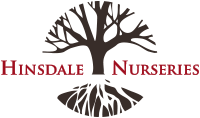
Blog
- Home
- Landscaping
- Colorful Annual Flowers that Help Pollinators Thrive


Gardeners everywhere are itching to get their hands dirty. If you’re looking to add some color to your garden and help out some pollinators, incorporating annual flowers is a fantastic idea. Annuals offer an abundance of pollen and nectar to support bees and butterflies throughout their life cycles. In this blog, we’ll take a look at some of the best annuals to plant in the Hinsdale area to attract pollinators and bring some life to your garden.
Cosmos is a must-have in any pollinator garden. These flowers come in a range of colors, from vivid crimson to muted white, and have daisy-like blooms on top of airy foliage. They can vary in height and should be grown in full sun. Deadheading will promote more blooms, making them a perfect choice for a cut flower garden.
Lantana is another great option. This plant boasts clusters of orange, red, pink, white, and yellow flowers on spicy-smelling foliage. It creates a dense edging that is constantly in bloom and is highly attractive to hummingbirds, butterflies, and bees. These flowers prefer full sun to partial shade.
Zinnias are an impressive flower, producing a plethora of blooms that last all season until the arrival of frost. With many varieties to choose from, you can select from a range of colors and sizes. Zinnias prefer full sun and can grow up to three feet tall.
Alyssum is a low-growing plant that produces masses of honey-scented blossoms, making it a pollinator magnet! It is an excellent border plant in a pollinator garden and comes in multiple colors. Alyssum prefers full sun to partial shade and can be used in container gardens as well.
Salvia is an easy-care, long-blooming plant that shows off dynamically colored flowers loved by bees, butterflies, and hummingbirds. They come in red, blue, purple, pink, salmon, & white colors. Salvia prefers full sun to part shade and can grow up to three feet tall.
So, when is the best time to plant these pollinator-friendly annuals? The ideal planting time is in the spring after the last frost. In Illinois, the average last frost date is around mid-April. This timing allows the plants to establish themselves before the heat of summer. If you miss the spring planting window, don’t worry, you can still plant into the summer or plant in early fall for a late-season bloom.
Embarking on your pollinator garden project is an excellent opportunity to design a charming outdoor area while offering a crucial shelter for pollinators. Take the first step and begin creating your pollinator garden today!
Connect with Us!
630-323-1411
7200 S. Madison St.
Willowbrook, IL
Blog: https://hinsdalenurseries.com/blog
Facebook: https://www.facebook.com/HinsdaleNursery
Pinterest: https://www.pinterest.com/hinsdalenursery/
Twitter: www.twitter.com/HinsdaleNursery
Instagram: www.instagram.com/Hinsdale_Nurseries/
YouTube: https://www.youtube.com/channel/UC5GUOu9abCvL9ZDNJBSunrA
Website: https://hinsdalenurseries.com/

